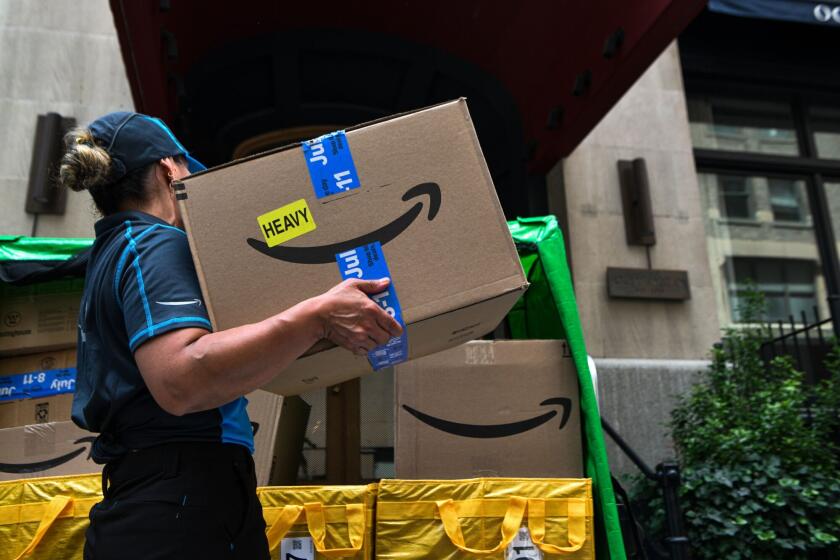Kodak files for long-expected Chapter 11 bankruptcy
- Share via
Eastman Kodak Co.’s grand days as a vanguard American company, responsible for the millions of photos stuffed in family albums and shoe boxes across the country, seemed far away when the company finally filed for a long-expected bankruptcy.
But although many knew that Chapter 11 restructuring was coming for the storied brand — long buckling under competitive and technological pressures and liquidity woes — the announcement still left many in a somber mood.
“There’s a romanticism that everybody feels with Kodak — it’s like holding a blank canvas,” said Damon Berger, co-founder of the Disrupt/Group production house in Hollywood. “That film and the physical and visceral connection to it represented something special.
“But we don’t have that anymore — we have memory cards.”
Kodak once was a mainstay in American households with products such as Kodachrome photographic film — celebrated in a Paul Simon pop song — and Brownie cameras. The 132-year-old brand was one of the most recognizable in the world, pioneering and then ruling the industry for decades as a gold standard for both photographers and the business community.
Then came heavy foreign competition, especially from Japanese rival Fujifilm. Later, digital imagery and smartphone cameras. For the digital generation, one of the few touchstones with film is an iPhone app that mimics the look of old-time Super 8.
Kodak brought in current Chief Executive Antonio M. Perez, formerly head ofHewlett-Packard Co.’s printer business, less than a decade ago to shake the fading giant out of its slump. But the printer and digital photography market, which Kodak continues to eye as a key to future profitability, has proved difficult to crack.
Much of Kodak’s value may now rest in its vast collection of patents, though some of their worth may have been diluted by years of licensing to other companies. To raise cash, Kodak said, it might sell the intellectual property portfolio, which it is now trying to protect through a recent batch of patent infringement lawsuits it filed against technology firms such as Samsung, Fujifilm and Apple.
Since 2003, the company has seen falling profit or a net loss in every year except one and has laid off 47,000 workers and shuttered 13 manufacturing plants and 130 processing labs. And there probably will be more cuts coming, though how many is unclear, said Kodak spokesman Christopher Veronda.
“The company has said that one of the things it will do is streamline its structure,” he said. “You can certainly read into that that there are more job cuts on the way. It’s a continuation of the path that we’ve been on.”
The company’s stock, which a decade ago was trading at more than $20, was delisted from the New York Stock Exchange and closed Thursday on the OTC pink sheets at 30 cents a share.
The sour financial outlook led to weeks of early obituaries from Kodak watchers and, on Thursday, the Chapter 11 filing for the company and its U.S. subsidiaries in federal Bankruptcy Court in New York.
In court documents, Kodak listed $5.1 billion in assets and $6.75 billion in debts, with creditors including Wal-Mart Stores Inc., Best Buy and Disney Studios.
Kodak, with the help of an 18-month, $950-million credit facility from Citigroup, plans to continue operating through the restructuring. The bankruptcy process, which Perez called “a necessary step and the right thing to do for the future of Kodak,” is expected to wrap up in 2013.
Kodak’s restructuring probably will be longer than most because the company will face intensive negotiations with its many creditors, said Ken Russak, a partner with the Los Angeles bankruptcy law firm Frandzel Robins Bloom & Csato.
“This bankruptcy is unusual compared to other recent ones in that, though Kodak’s got a good idea of what they need to do to emerge, it doesn’t sound like they have a prepackaged exit strategy going in, where most of the hard work is already done,” he said.
More to Read
Inside the business of entertainment
The Wide Shot brings you news, analysis and insights on everything from streaming wars to production — and what it all means for the future.
You may occasionally receive promotional content from the Los Angeles Times.











